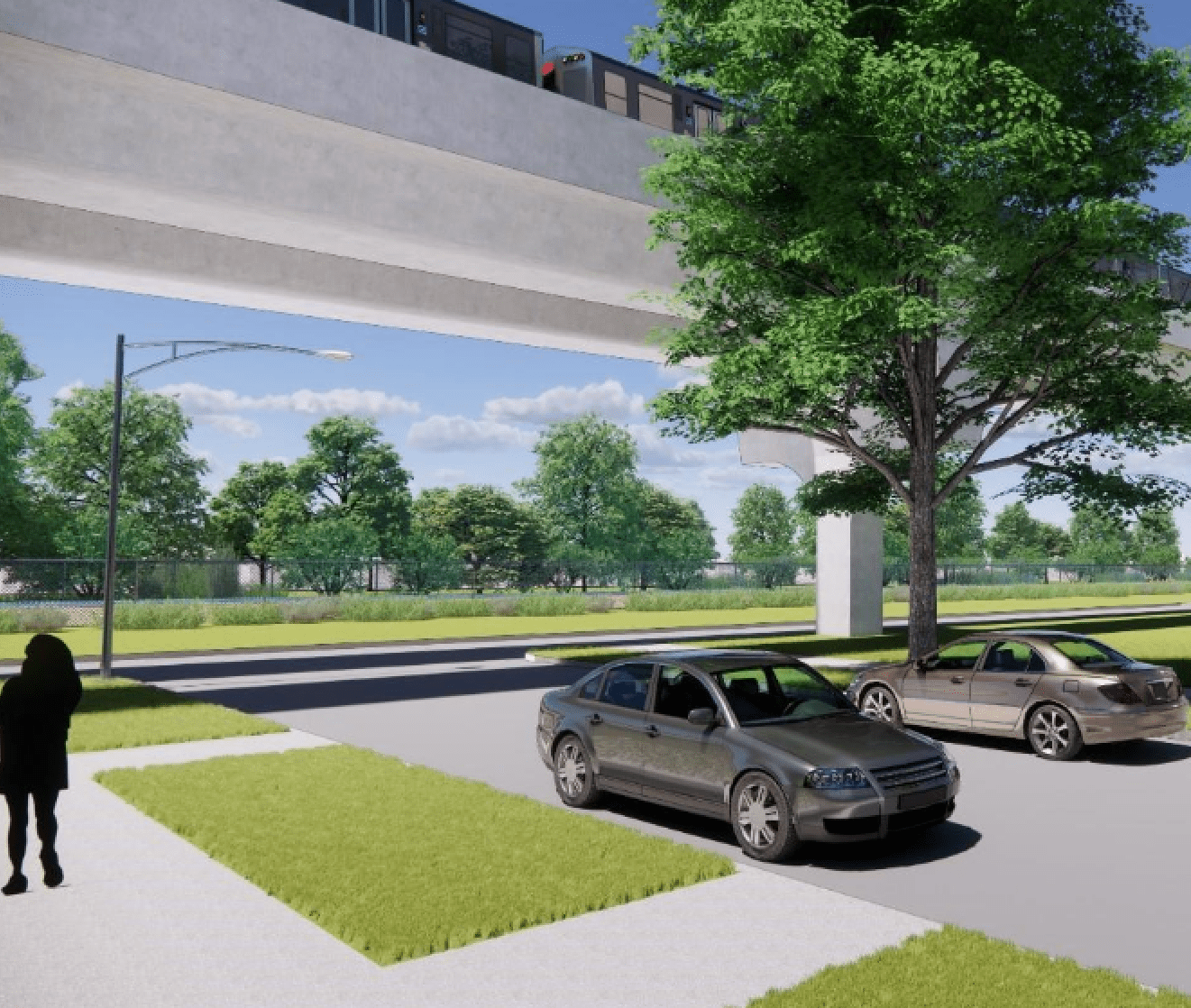Get information on other upcoming Red Line hearings, as well as opportunities to review the the Supplemental EA and Section 4(f) Evaluation and provide feedback, here.
With Illinois projected to get $17 billion in federal infrastructure funding, the longtime dream of extending the CTA Red Line south to nearly the city limits is looking likely to become a reality.
On January 31, the Supplemental Environmental Assessment, a federal National Environmental Policy Act review document, for the $2.3 billion Red Line project was published. This Supplemental EA discloses potential impacts from three project design changes that weren't identified in the 2016 Draft Environmental Impact Statement.
Representatives of the CTA and NEPA are holding hearings this month to summarize the results of the Supplemental EA andSection 4(f) evaluation, and to gather feedback from residents on the benefits, impacts, and proposed mitigation measures of the design changes.
A virtual hearing on Tuesday hearing was moderated by Barbara Stubblefield, who's coordinating outreach on the project for the CTA. It featured presentations by CTA planners Marlise Fratinardo and Amnar Elmajoub, as well as Grace Dysico and Robin Martel from NEPA.

Fratinardo explained that the new tracks will head south the 95th/Dan Ryan Red and turn west towards I-57. The 5.6-mile route will be elevated until 119th Street, at which point it will descend to ground level, where it will remain until the southern terminal at 130th Street in the Altgeld Gardens housing project. There will be four stations: 103rd Street (near Eggleston), 111th Street (near Eggleston)M, ichigan Avenue (near 116th Street), and 130th Street.
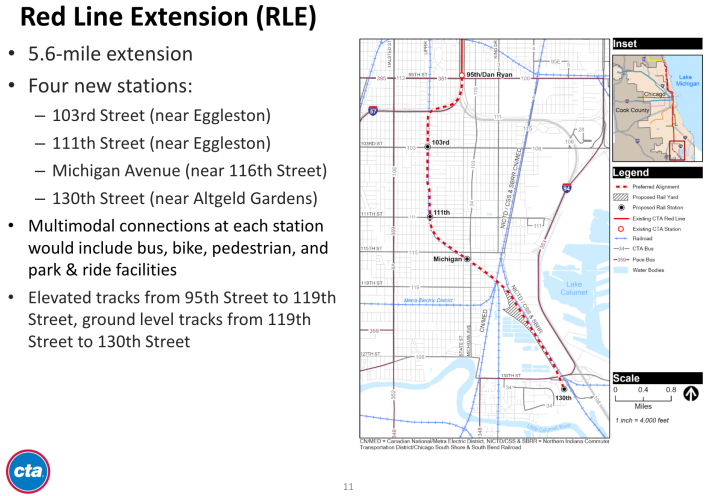
The project is intended reducing commute times, cutting the trip from Algeld Gardens to the Loop by 30 minutes, and improving access to education, jobs, retail, and healthcare. The CTA identified five benefits of the project: equity, frequent rail service, connectivity, economic opportunity, and sustainability.
The three design changes include relocating the planned site of the 130th Street station St; 120th Street yard and shop refinement (this refers to the facilities for storing additional 'L' cars for the extension); and the 107th Place Crossover, where the elevated structure would cross over the Union Pacific railroad tracks, from west to east.
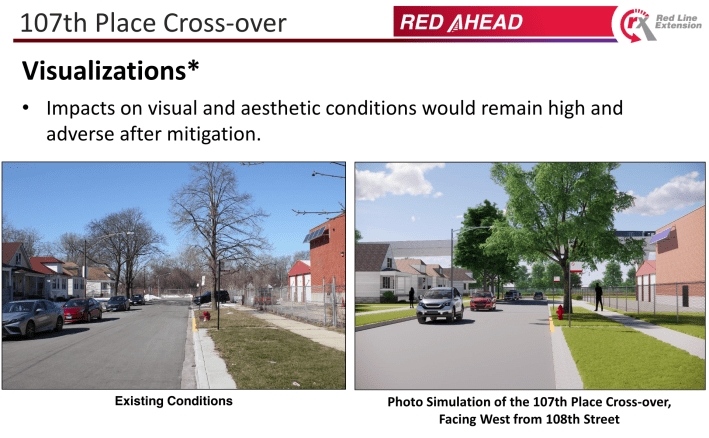
Grace Dysico discussed the 130th Street station relocation from the north side of the highway-like street to within Altgeld Gardens. This coincides of the demolition of three blocks of buildings in the housing project. That was done by the Chicago Housing Authority, independent of the RLE project. However, the demolition opened up space for the Red Line station. Dysico mentioned better connectivity and accessibility and safety, as well as the desire to move the stop farther from a local water treatment plant, as reasons for relocating the station south of 130th.
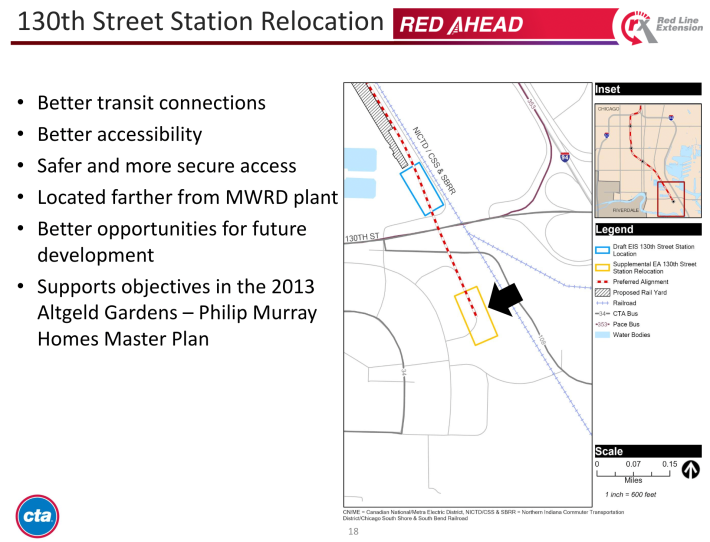
Robin Martel discussed the changes to the plan for the 107th Place Crossover. Some of the refinements include preserving businesses and properties slated for future development, minimizing impacts to adjacent land, avoiding the historic Roseland station, and accommodating Union Pacific Railroad's future ability to expand.
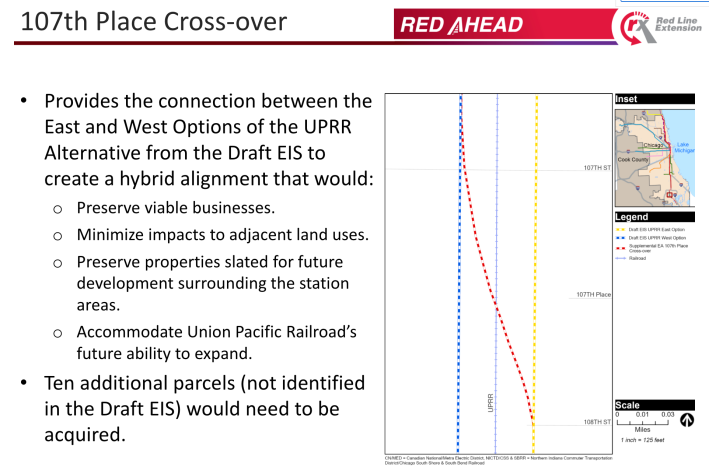
Ammar Elmajdoub described the RLE corridor land acquisition plan. “Of the 228 needed properties, 105 are unimproved, 66 are residential, 36 are commercial or industrial, nine are railroad, and 12 are a combination of public, community or institutional uses.” The surplus of vacant properties and buildings, Elbajoub continued, will allow for business and residents to relocate within the property.
